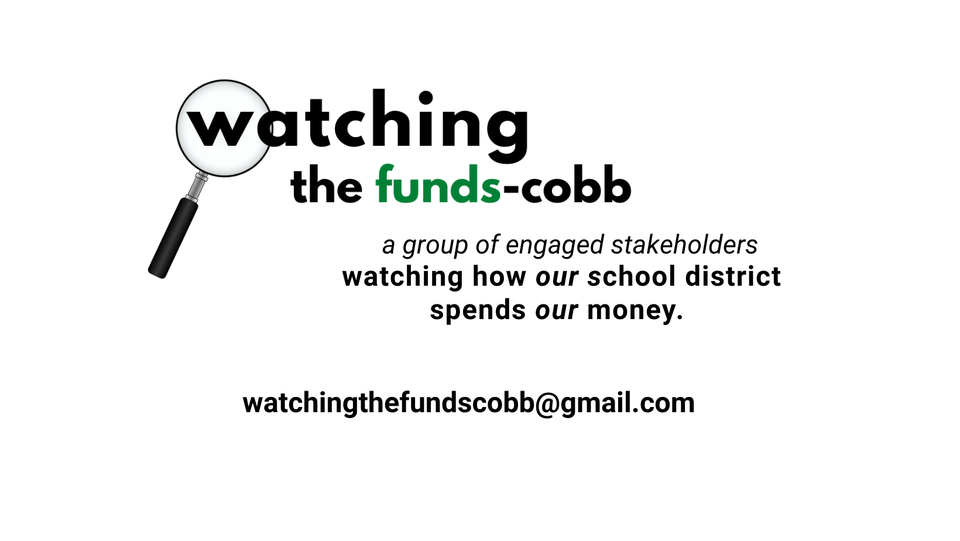Advocating for change in school districts can be a daunting task, especially when you don’t know where to start.
Stacy Efrat, co-founder of Watching the Funds – Cobb, a grassroots watchdog group that monitors spending in the Cobb County School district, and Erika Tate, founder of Bluknowledge, a learning company that “advances equity through the design and study of learning experiences for learners and organizations in schools and communities,” in Savannah, Georgia shared their tips for advocating in school districts based on their own experiences.
Getting started
Finding like-minded people through social media or your Parent Teacher Association is a great way to get started, Efrat said.
“Facebook isn’t the way to make change, but it’s definitely a tool that you can use to find others who want to do the same thing [as you] and then you can go offline and actually get your actions done,” Efrat said.
Parents can speak with their schools’ principals to find other parents who share the same concerns, Tate said.
Finding the correct point of contact for the issue is important to see proper action taken and it is best to have everything in writing, because the school will keep records of your communication, Tate said.
“If it’s in the classroom with a teacher that’s your first point of contact, see if you can email the teacher — it’s always good to have things in writing — or talk with the teacher, just in a respectful way and share your concerns,” Tate said. “If it’s at the school level, then the principal is that person and if you think it’s an issue that’s going across multiple schools, then the district is that person.”
Helpful tools to use
Efrat said the news media is an important advocacy tool to use to get the word out on what you are advocating. She explained that sharing what the community and advocates are feeling about certain issues with the news media makes their jobs easier as well as your own advocacy.
Joining advocacy groups such as Efrat’s Watching the Funds – Cobb can be a useful tool in your arsenal, and can be what you make of it, Efrat said.
“For me it’s probably three to four hours a week, but we have other volunteers in our group, who say, ‘I don’t have time to lead the group but I’m happy to speak for the group at board meetings, so just let me know when you need me,’ and we call,” Efrat said. “We’re like, ‘Hey, board meeting’s coming up next week. Can you prepare like two paragraphs?’”
How to speak at school board meetings
School board meeting public comment sections typically have time limits and rules surrounding what can be said. Efrat recommends practicing at home and to learn your school district’s rules before speaking to avoid any issues.
“If I’m planning on a two minute limit at home, I won’t go past like a minute and 45 seconds so if I get nervous, or I trip on my words, when I’m actually doing it live, I’ll still be able to finish it in that time limit,” Efrat said. “My advice would be: practice at home, many, many times, and give yourself a 15 to 30-second buffer, just in case you don’t go as quickly as you do at home.”
Stacy Efrat, co-founder of Watching the Funds – Cobb
How to advocate as a teacher or school employee
Teachers and other school employees need to revisit their contracts before performing any advocacy to avoid facing negative consequences, Tate said.
Teachers may share their concerns with their principals, school, or district leadership, Tate said.
“Don’t get yourself fired because then you can’t advocate for yourself, but know your guidelines and work and be strategic around them,” Tate said.
In more delicate situations, teachers may anonymously share their concerns with advocacy groups to advocate in their place, Efrat said.
How to advocate intense environments
As tempers have flared over issues such as critical race theory — an intellectual movement that examines U.S. history from a lens that recognizes that systemic racism is a part of American society — it has become increasingly difficult to advocate in such a divisive space.
Tate said with an abstract topic like critical race theory, it’s important to put people first in your advocacy.
“Take into account how it affects how schools are today and the lived experiences of your students and your teachers and your leaders and your custodians and your cafeteria workers like everybody in your school because school is a community and it’s part of communities,” Tate said.
Providing examples of injustices can better illustrate your point, Tate said.
“You can do human examples like the history of oppression in this country but also examples of history being taught incorrectly or teaching something that doesn’t even talk about race,” Tate said.
Efrat said even when the opposing side appears stronger, you shouldn’t give up.
“If there’s anything we’ve seen in the last few years in Georgia that things are changing,” Efrat said. “Georgia is becoming more and more diverse every day, which is probably the cause of all of these new rules and laws that are being imposed.”

